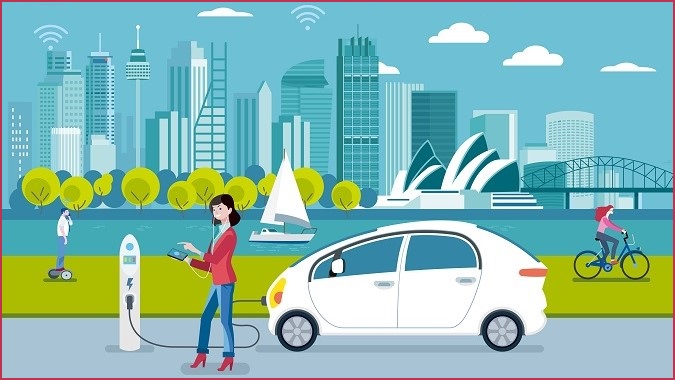What will Australia look like in 2060?
International tensions, lack of trust in institutions, cultural division, climate change, a growing population, and increasing automation: all of these factors point to an uncertain and difficult future.
In the Australian National Outlook (ANO) 2019, the CSIRO has used sophisticated modeling techniques to prepare two potential outcomes for Australia in 2060: Slow Decline and Outlook Vision.
The Slow Decline sees Australis drifting into the future. Wages and GDP grow slightly, energy costs and emissions decrease, and landholders still see a return on investment.
The Outlook Vision is much more promising: city densities increases, Australia reaches net-zero emissions, environmental plantings improve, there are greatly fewer cars on the roads – all this while improving the economic forecast in terms of GDP, wages, and land assets growth.
CSIRO Futures Director, James Deverell, said the result is possible with the right type of collaborative thinking, effort, and technology adoption.
"We believe the positive outcomes in this report are all achievable, but they will require bold, concerted action and long-term thinking,” he said.
"Emerging technologies will play a key role and Australian companies need to be aware of both the opportunities and challenges they will create."
Five Key Shifts
For the best possible outcome, Australia needs to make significant changes in five key areas: industry, cities, energy, land, and culture – in many of these areas, technology is key.
The industrial shift requires a focus on new technologies and a movement away from Australia’s traditional exports.
“The industry shift would see Australian firms adopt new technologies such as automation and artificial intelligence to boost productivity, which accounts for a little over half of the difference in living standards between the Outlook Vision and Slow Decline,” Deverell wrote in an article on The Conversation.
“Developing human capital through education and training and investment in high-growth, export-facing industries such as healthcare and advanced manufacturing each account for around 20 per cent of the difference between the two scenarios.”
ACS president Yohan Ramasundara also noted the need for a focus on tech skills training, recently criticising the federal government over its focus on non-technology trade jobs in the last budget.
“The jobs of tomorrow are technology jobs. Not trades and physical labour,” he said. “This focus on trades is short-term thinking at best, a way to get untrained young people into jobs now, but offering no long term solutions.”
In both scenarios, the ANO predicts Australia’s population to increase to 41 million by 2060.
For the Outlook Vision, population density in cities needs to rise, limiting urban sprawl. To achieve this, major changes in transport and urban planning need to take place.
The ANO suggests that big data will also become a big player in how the cities of 2060 operate.
“Road sensors, machine learning and analytics being used to predict and optimise the timing of traffic directions and road maintenance, as well as to inform the price and use of toll roads to move traffic away from peak times, is just around the corner.”
Energy use in the Outlook Vision will increase by only six per cent, despite population growth of 60 per cent in the same time frame.
Virtual power plants and better electricity monitoring will help make energy use more efficient across the country as the country’s energy generation inevitably transitions toward renewable sources.
Interestingly, the Australian culture needs to shift in order to achieve the best possible outcome.
The ANO outlines support for technology adoption and innovation alongside a need to improve trust in institutions as key areas for cultural development.
The report says that healthy risk-taking will enable Australia to “invest in the technology needed for productivity, in the emerging sectors needed for resilience, in the technology needed for affordable, reliable low-emission energy and in the sources of future land-based income.”










